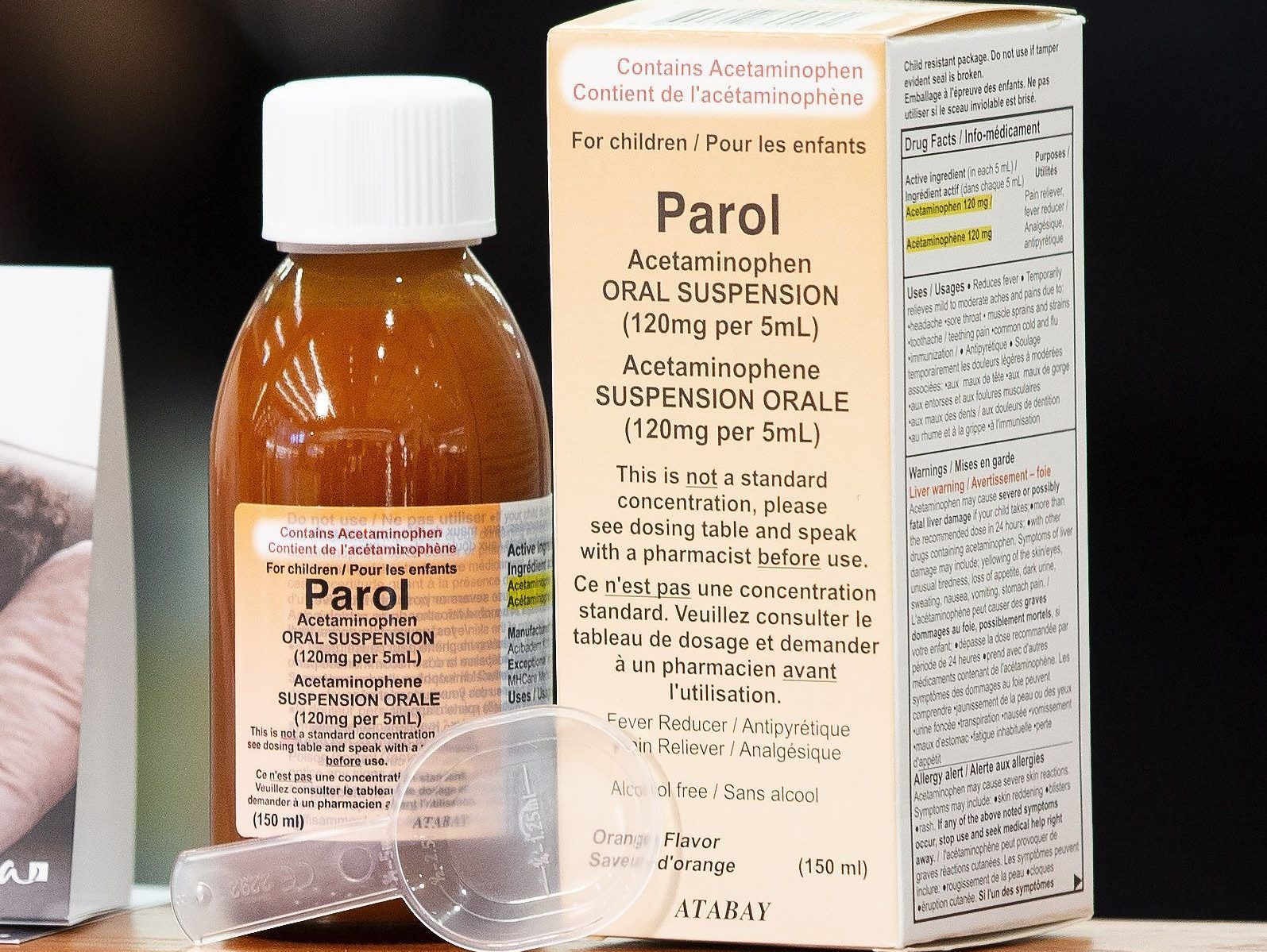Alberta hospitals were directed to stop using imported Turkish pain medication after 6 months: AHS bulletin
The province imported $80M worth of acetaminophen in early 2023 but demand has been low amid dosing concerns and renewed domestic supply. The Canadian acetaminophen oral liquid shortage has ended in Alberta hospitals and pharmacies after six months of uncertainty. The AHS bulletin stated that hospitals will transition back from the Turkish Atabay supply to the previous AHS formulary products. The move follows a decision by the government to stop using imported Turkish pain medication, which is considered a leading cause of acute liver failure by Health Canada. Last December, the government announced plans to import five million bottles of Parol brand acetamophen and ibuprofen from Turkish company Atabays for $80 million, which could offset the $80-million price tag expected to generate by selling the medication to other provinces. Health Minister Adriana LaGrange defended the purchase, stating it was critical for the government for additional supply to support families and ease the strain on the health system. The province expects sufficient stock of children’s pain medication for the upcoming respiratory virus season.

发表 : 2年前 经过 Matthew Black 在 Politics
It cites “the resolution of the Canadian acetaminophen oral liquid shortage” in announcing the change. “With the resolution of the Canadian acetaminophen oral liquid shortage, Alberta hospitals will transition back from the Turkish Atabay supply to the previous AHS formulary products,” it reads. “Site pharmacies and patient care areas will work together to transition to the usual acetaminophen products.” Last December, Alberta announced its plan to import a combined five million bottles of Parol brand acetaminophen and Pedifen brand ibuprofen from Turkish company Atabay at a cost of $80 million, amid a widespread shortage that left parents scrambling.
The first shipments began arriving at hospitals last January, to be used by children as well as adults who are unable to swallow pills. Parol was made available for sale in pharmacies in March, but is sold behind the counter due to its weaker strength of 24 mg/mL compared to 32 mg/mL in typical domestic children’s acetaminophen. That difference meant pharmacists were required to educate patients on how to properly measure Parol to limit potentially harmful dosage errors. Health Canada says about 4,500 Canadians are hospitalized each year due to taking too much acetaminophen, which it also describes as a leading cause of acute liver failure. It adds that Parol and Pedifen are only authorized for use in Alberta and that any changes to the distribution of those products would require a new proposal be submitted and approved.
‘Make sure we have it on hand’ Last March, then-health minister Jason Copping said the $80-million price tag could be offset by the revenue the province expected to earn by selling the medication, including to other provinces. In March and then again last month, Postmedia surveyed other provinces to gauge interest in buying Alberta’s supply but found little, with most citing the sufficient existing stock of medication or concerns over the differing dosage. The Alberta government has since backed off of that plan, with Health Minister Adriana LaGrange telling Postmedia in an interview that the supply would remain in Alberta hospitals and pharmacies. “There isn’t a shortage right now, but that’s not to say that as flu season progresses that it might not become a shortage again,” LaGrange said. “We want to make sure that we have it on hand.”
She added, “we are exploring what other options are available to us” regarding the future of the medication, but didn’t specify what those options were. In a subsequent statement, her office defended the purchase, stating, “it was critical for the government to act and obtain much needed, additional supply to support families and ease the strain on the health system.” It noted the province expects to have sufficient stock of children’s pain medication for the forthcoming respiratory virus season. The July bulletin came as a relief to those who worked with the medication. A health-care worker at a major Alberta hospital said in an interview that Parol was unpopular due to the heightened possibility of dosing mistakes.
“It’s a very real risk,” the worker said. “It’s not an ideal product.” Postmedia is not naming the worker to protect them from retaliation. Most children’s acetaminophen is a solution — where the medication is already dissolved — whereas Parol is a suspension that needs to be shaken to properly mix the medication. It’s also of a thicker consistency, something that can clog feeding tubes and create issues for nurses, the worker said. “We didn’t want to do it for any longer than we had to because of all the changes and differences it would make,” they said, adding the switch to Parol and back to the domestic supply was a disruption to hospital operations. “There’s waste involved with a change in medication strength. There’s education for the staff. There’s just time and logistics that go into making that happen.” The worker said that boxes of Parol are sitting, sealed on the hospital’s shelves. “We’re just waiting to hear what happens.” Parol has a shelf life of three years, with Alberta’s supply expected to expire in early 2026. Just under 14 million units of children’s medication were produced and made available for sale across the country between November of 2022 and May of 2023, according to Health Canada. The agency estimates there are five million children and infants under the age of 12 in Canada, including just over 720,000 in Alberta.
话题: Turkey, Turkish
